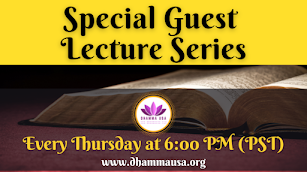According to Theravāda Buddhist tradition, while 28 Buddhas are specifically named, is there a doctrinal basis for the belief in the existence of countless Buddhas across past and future eons?
Answer:
Yes, according to Theravāda Buddhist tradition, while the Buddhavaṃsa—a canonical text within the Khuddaka Nikāya of the Pāli Canon—explicitly names 28 Buddhas, there is a broader doctrinal basis for the belief in countless Buddhas across past and future eons (kappa).The idea of innumerable Buddhas is supported by multiple suttas. For instance, in the Sāriputta Sutta, the Buddha emphasizes the rarity of a Tathāgata’s appearance in the world, implying that such occurrences are few across long stretches of time.¹ This suggests the named Buddhas are not the only ones but rather exemplars among countless others.
Likewise, the Mahāpadāna Sutta presents the lives of seven Buddhas but introduces them in a context suggesting they are representative of a much larger tradition.² The cyclical cosmology of early Buddhism—comprising endless world systems (lokadhātu) arising and dissolving—allows for the possibility of infinite Buddhas appearing over vast eons.
The Cakkavatti-Sīhanāda Sutta further confirms this continuity by prophesying the future Buddha Metteyya (Maitreya), who will arise in a distant future era after the teachings of Gotama Buddha have disappeared.³
In Theravāda commentarial literature as well, such as the Dīgha Nikāya Aṭṭhakathā and the Buddhavaṃsa Aṭṭhakathā, this theme of innumerable Buddhas continues, aligning with the bodhisatta ideal and the path of accumulating the ten perfections (dasa pāramī) over many lifetimes.⁴
Thus, while 28 Buddhas are specifically honored in the Pāli tradition, the broader doctrinal context affirms the existence of countless Buddhas throughout the infinite cycles of samsāra.
Footnotes:
Aṅguttara Nikāya 4.23, Sāriputta Sutta, in Aṅguttara-Nikāya, vol. 1, ed. R. Morris (London: Pali Text Society, 1885), 127; trans. Bhikkhu Bodhi, The Numerical Discourses of the Buddha (Boston: Wisdom Publications, 2012), 428–429.
Dīgha Nikāya 14, Mahāpadāna Sutta, in Dīgha-Nikāya, vol. 1, ed. T. W. Rhys Davids and J. E. Carpenter (London: Pali Text Society, 1890), 92–105; trans. Maurice Walshe, The Long Discourses of the Buddha (Boston: Wisdom Publications, 1995), 199–213.
Dīgha Nikāya 26, Cakkavatti-Sīhanāda Sutta, in Dīgha-Nikāya, vol. 3, ed. T. W. Rhys Davids and J. E. Carpenter (London: Pali Text Society, 1911), 58–79; trans. Walshe, The Long Discourses of the Buddha, 397–404.
Buddhavaṃsa, in Khuddaka-Nikāya, ed. L. Feer (London: Pali Text Society, 1884); trans. I. B. Horner, Buddhavaṃsa and Cariyāpiṭaka (London: Pali Text Society, 1975), vii–x; see also Buddhavaṃsa Aṭṭhakathā, ed. N. Aung and C. A. F. Rhys Davids, Compendium of Philosophy (London: Pali Text Society, 1910), xv–xx.































0 comments:
Post a Comment
Your comments and feedback are very helpful to us in improving our posts. We really appreciate your time. Thank you!
Dhamma USA Team.